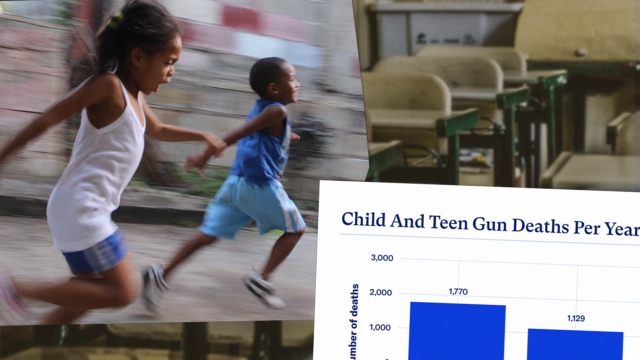Children & Teens
Children & Teens
What is the problem?
Firearms are the leading cause of death for children and teens (ages 1 to 19) in the United States.1Centers for for Disease Control and Prevention, National Center for Health Statistics. WONDER Online Database, Provisional Mortality Statistics, Multiple Cause of Death, Injury Mechanism & All Other Leading Causes, (accessed September 1, 2024), https://wonder.cdc.gov/controller/saved/D176/D405F541. Data from 2023. Ages: 1–19. Every year, nearly 22,000 children and teens are shot and killed or wounded2Everytown Research analysis of Centers for Disease Control and Prevention, National Center for Health Statistics. WONDER Online Database, Provisional Mortality Statistics, Multiple Cause of Death (accessed September 1, 2024), 2019–2023, and Healthcare Cost and Utilization Project (HCUP) nonfatal firearm injury data, 2020. Ages: 0–19. and approximately 3 million are exposed to gun violence.3David Finkelhor et al., “Prevalence of Childhood Exposure to Violence, Crime, and Abuse: Results from the National Survey of Children’s Exposure to Violence,” JAMA Pediatrics 169, no. 8 (August 2015): 746-54, https://doi.org/10.1001/jamapediatrics.2015.0676. Everytown’s analysis derives the 3 million number by multiplying the share of children (ages 0 to 17) who are exposed to shootings per year (4 percent) by the total child population of the US in 2016 (~73.5 million).
Children and teens in the U.S. are impacted by gun violence in all its forms. Exposure to gun violence has an impact on the psychological and mental well-being of children and teens and affects their school performance, among other factors.1David Finkelhor et al., “Children’s Exposure to Gun Violence: A Comprehensive National Survey,” US Department of Justice, Office of Juvenile Justice and Delinquency Prevention, October 2009, https://bit.ly/PwXoZN; Eboni Morris, “Youth Violence: Implications for Posttraumatic Stress Disorder in Urban Youth,” National Urban League, 2009; Patrick J. Fowler et al., “Community Violence: A Meta–Analysis on the Effect of Exposure and Mental Health Outcomes of Children and Adolescents,” Development and Psychopathology 21, no. 1 (2009): 227–59, https://doi.org/10.1017/S0954579409000145. When homes, neighborhoods, and schools are not safe from gun violence, entire generations of American children are affected.
Why is it an issue?
Firearms are the leading cause of death for children and teens (ages 1 to 19) in the U.S.1Centers for Disease Control and Prevention, National Center for Health Statistics. WONDER Online Database, Provisional Mortality Statistics, Multiple Cause of Death, Injury Mechanism & All Other Leading Causes, (accessed September 1, 2024), https://wonder.cdc.gov/controller/saved/D176/D405F541. Data from 2023. Ages: 1–19.
Children and teens in the U.S. experience staggeringly high rates of gun deaths and injuries. They are also harmed when a friend or family member is killed with a gun, when someone they know is shot, and when they witness and hear gunshots. Tragically, children and teens are at heightened risk by guns in the home. The vast majority of child and teen gun suicides and unintentional shooting deaths occur at a home.1Centers for Disease Control and Prevention, National Center for Injury Prevention and Control, National Violent Death Reporting System (NVDRS), 2021. Ages 0-19. Nearly 80 percent of child gun suicides involve a gun that belongs to a family member.2Catherine Barber et al., “Who Owned the Gun in Firearm Suicides of Men, Women, and Youth in Five US States?” Preventive Medicine 164 (2022): 107066, https://doi.org/10.1016/j.ypmed.2022.107066. Child defined as under 18.
By the numbers
4.6M
4.6 million children in the United States live in homes with at least one gun that is loaded and unlocked.
36%
Over the past decade, the firearm suicide rate among children and teens has increased by 36 percent.
>18x
Black children and teens are more than 18 times more likely than white children and teens of the same age to die by gun homicide.
3M
Approximately three million American children witness gun violence every year.
CHILD & TEEN GUN DEATHS PER YEAR
65% of child and teen gun deaths are homicides.
Last updated: 11.7.2024
What are the solutions?
-
Secure Gun Storage
Gun owners can make their homes and communities safer by storing their guns securely. This means storing them unloaded, locked, and separate from ammunition.
-
Extreme Risk Laws
When a person is in crisis and considering harming themselves or others, family members and law enforcement are often the first people to see the warning signs. Extreme Risk laws, sometimes referred to as “Red Flag” laws, allow loved ones or law enforcement to intervene by petitioning a court for an order to temporarily prevent someone in crisis from accessing guns.
-
Smart Guns and Gun Safety Features
A personalized—or “smart”—gun is a firearm that employs authorized-use technology, like the thumb scan or passcode available on many smartphones, to turn stolen guns and guns accessed by children into harmless pieces of steel. If widely implemented, it would be a game-changer for keeping guns out of the hands of children and criminals.
-
Reconsider Active Shooter Drills
95% of American public schools drill students on lockdown procedures. Yet, there is no strong conclusive evidence of the value of these drills for preventing school shootings or protecting the school community when shootings do occur.
-
Stop Arming Teachers
To prevent tragedies we must implement strong school safety solutions, but arming teachers is not one of them. School shootings are chaotic and in these moments of chaos, we cannot ask teachers to stop a shooter, potentially a current or former student.
-
Threat Identification and Assessment Programs in Schools
The most important thing that schools can do to prevent active shooter incidents—and gun violence overall—is to intervene before a person commits an act of violence. Threat assessment and identification programs allow schools to intervene to address potential violent behavior.
-
Background Checks on All Gun Sales
Background checks are the foundation of any comprehensive gun violence prevention strategy. Current federal law requires that background checks be conducted whenever a person attempts to buy a gun from a licensed gun dealer. This is to ensure that the buyer is not legally prohibited from having the gun. Since federal law began requiring these background checks in 1994, background checks have blocked millions of sales to people with felony convictions or other prohibiting histories.
Featured Resources
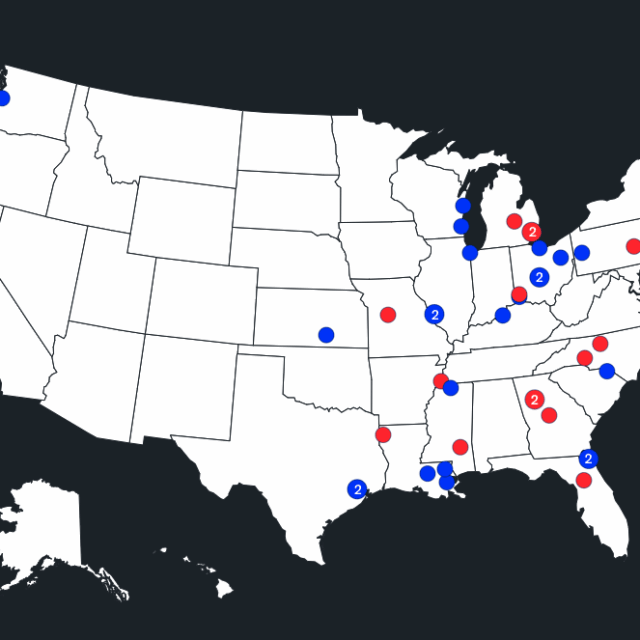
Not An Accident: Unintentional Shootings by Children
Every year, hundreds of children unintentionally shoot themselves or someone else after accessing unsecured guns. This is not an accident.
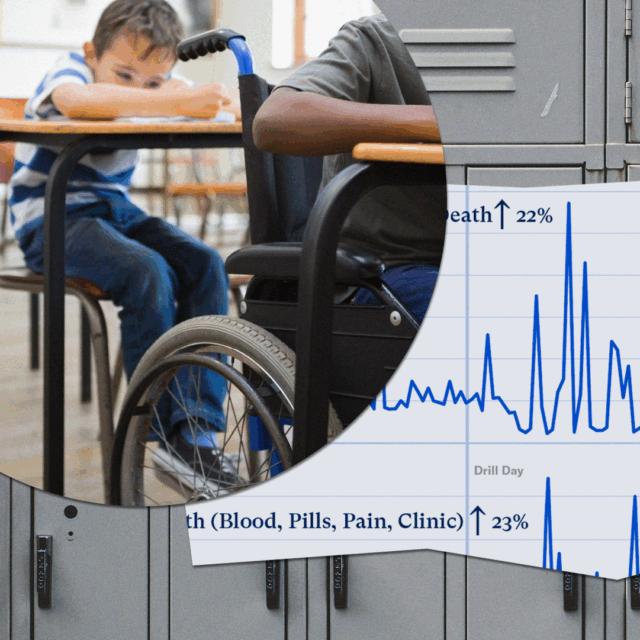
The Impact of Active Shooter Drills in Schools
Since the 1999 Columbine shooting, active shooter drills have proliferated in America’s school systems at an exponential rate.

How To Stop Shootings and Gun Violence in Schools: A Plan to Keep Students Safe
We need meaningful actions to keep our schools safe, actions that address what we know about gun violence in America’s schools.
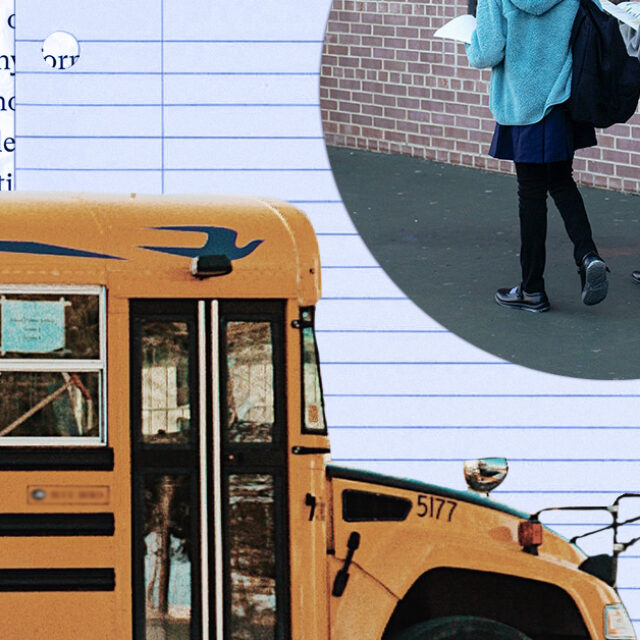
Gunfire on School Grounds
Since 2013, Everytown has tracked incidents of gunfire on school grounds to learn how often youth are affected by gun violence.
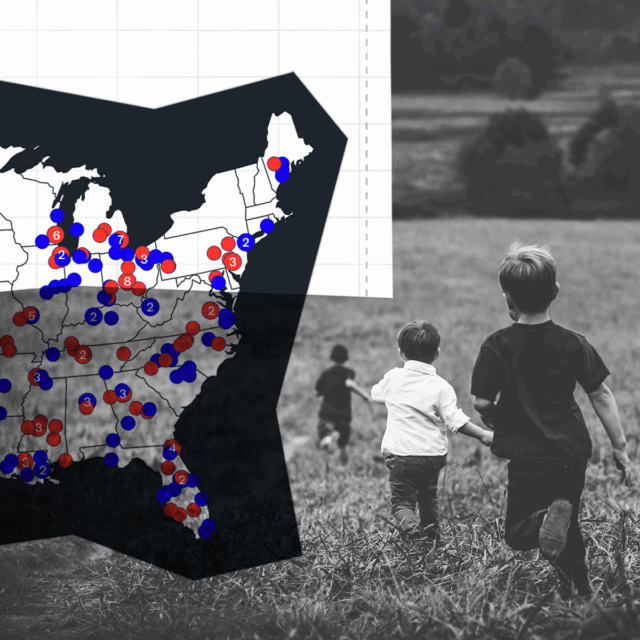
Ten Years of Preventable Tragedies: Findings from the #NotAnAccident Index of Unintentional Shootings by Children
Unintentional shootings by children are a persistent yet preventable tragedy that disproportionately involves preschool and teenage boys.
All Resources
Children & Teens
All Resources
Unpacking Arming Teachers Laws
To prevent tragedies we must implement strong school safety solutions, but arming teachers is not one of them.
Report
NEA School Gun Violence Prevention and Response Guide
We published the guide’s four sections—on prevention, preparation, response, and recovery—separately to facilitate their use. Each part includes material for Pre-K–12 schools and institutions of…
Report
Gun Violence Is Down in Our Cities. Why Not Also in Our Schools?
Report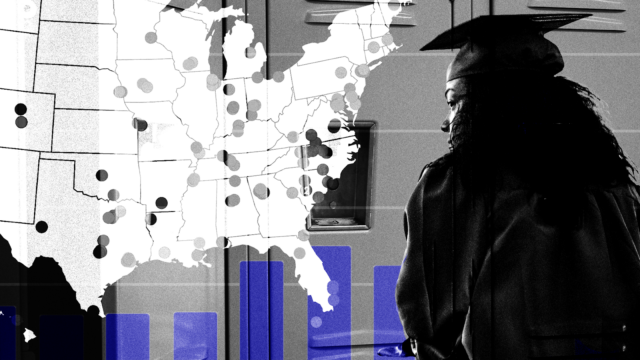
Arming Teachers Introduces New Risks Into Schools
During the 2023–2024 school year, there were 49 deaths from gunfire on US school grounds and an additional 116 injuries.
Fact Sheet
The Relationship Between Firearms, Mass Shootings and Suicide Risk among LGBTQ+ Young People
One in five LGBTQ+ young people report they or someone they know has been personally impacted by a mass shooting.
Report
New Data, Same Conclusion: Smart Gun Laws Save Lives
Everytown's Gun Law Rankings show a clear correlation between states with strong gun laws and lower rates of gun violence.
Everytown Research & Policy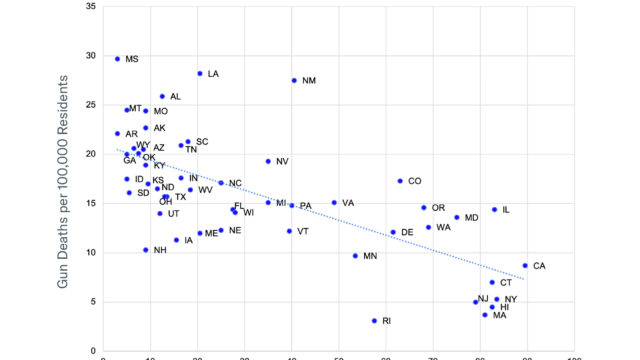
Findings from the #NotAnAccident Index, 2015–2021 (Injury Epidemiology)
This study published in Injury Epidemiology assesses the scope of unintentional shootings by children in the US.
ReportTwo Decades of Suicide Prevention Laws: Lessons from National Leaders in Gun Safety Policy
In order to understand the variability in state-level firearm suicide rates, Everytown has examined the role of state gun safety policies.
Everytown Research & Policy
How Can We Prevent Gun Violence in American Schools?
School leaders and policymakers must support and implement strong gun safety laws and school-based interventions.
Fact Sheet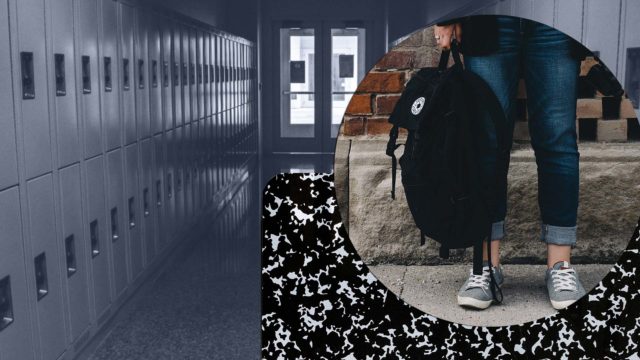
Be SMART
The Be SMART campaign raises awareness about how secure gun storage can save children’s lives.
Initiative
Cómo detener los tiroteos y la violencia armada en las escuelas: Un plan para mantener seguros a los estudiantes
Necesitamos acciones significativas para mantener nuestras escuelas y las comunidades circundantes seguras en los Estados Unidos.
Report
A Continuum of Gun Access Interventions for Preventing Gun Suicide
Gun access interventions exist on a continuum, a chain of actions that can be taken depending on the severity of the crisis.
Fact SheetGuide to Secure Gun Storage Devices
Secure gun storage can prevent theft and access by children, unauthorized users, and anyone who may pose a danger to themself or others.
Report
Preventable Tragedies: Findings from the #NotAnAccident Index of Unintentional Shootings by Children
Unintentional shootings by children are a persistent yet preventable tragedy that disproportionately involves preschool and teenage boys.
Report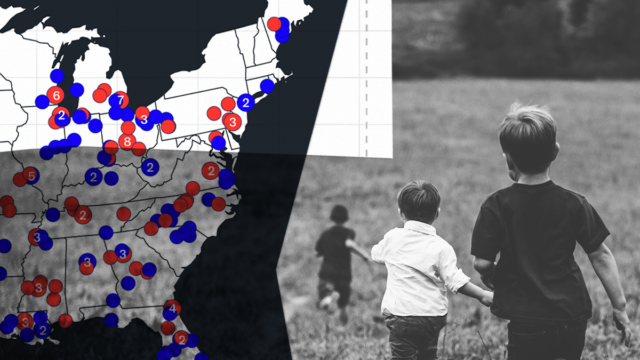
Gun Violence in America
We have gathered the most comprehensive, publicly available data to illustrate the magnitude of everyday gun violence.
Report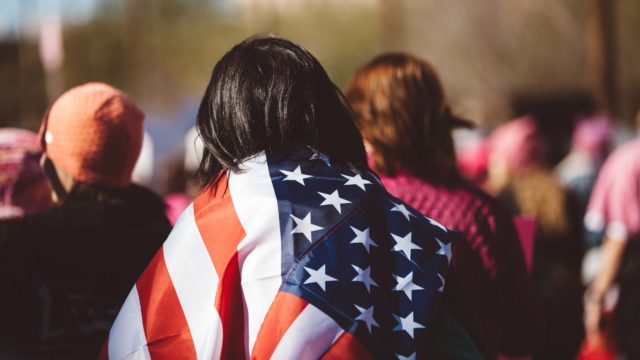
Keeping Our Schools Safe: A Plan for Preventing Mass Shootings and Ending All Gun Violence in American Schools
The failure of our leaders to address the root causes of school gun violence is having lasting consequences for millions of children.
Report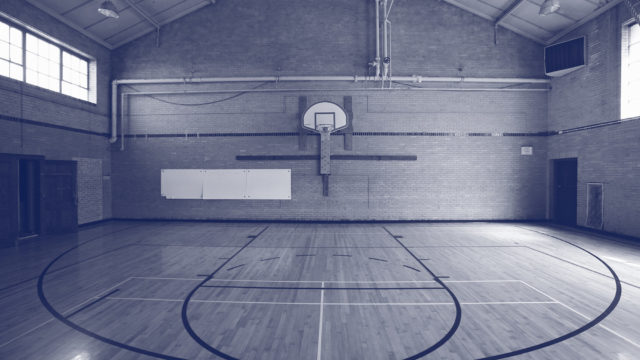
Unload, Lock, and Separate: Secure Gun Storage Practices to Reduce Violence
Secure gun storage practices should include unloading the ammunition, locking the gun, and storing it and ammunition in separate locations.
Fact Sheet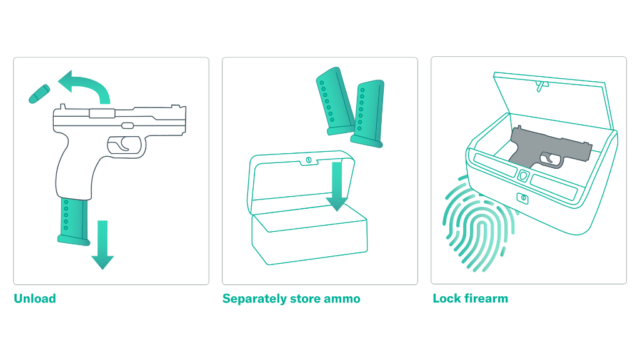
The Impact of Gun Violence on Children and Teens
Children's exposure to gun violence has far reaching effects: An estimated three million children witness a shooting each year.
Fact Sheet